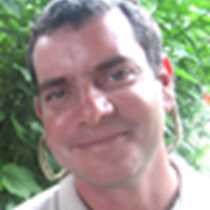Santa Cruz Island
Today we started our day anchored at Academy Bay, located at the southern end of Santa Cruz Island. Early in the morning we disembarked at the Galápagos National Park dock, where we spotted several speedboats used for patrolling the Galápagos Marine Reserve, which happens to be the third largest in the world.
After a short walk we got to the giant tortoise breeding center, where we learned about how the Charles Darwin Research Station scientists and the park rangers breed these emblematic chelonians in captivity. We also met two of the most famous giant tortoises on the planet: the last individual of its species from Pinta Island, Lonesome George; and the most successful reproducer from Española Island, Diego. After our morning visit we had a little free time to wander around Puerto Ayora and do some shopping to support the local economy of the islands.
On our way to Santa Cruz’s highlands we stopped by a locally-owned sugar mill. There we learned how the Cabrera family processes the sugar cane to get molasses, raw sugar and the very popular sugar cane firewater. They also grow and roast their own Galápagos organic coffee. We got to taste all of these local delicacies. Our next stop was at Altair, a beautiful restaurant located in the highlands of Santa Cruz.
After lunch we continued higher, and stopped at some very interesting formations known as the Gemelos, which are a couple of sinkholes surrounded by endemic vegetation such as the dominant scalesia forest, cat’s claw, ferns and several species of epiphytes. During the visit we got a heavy shower, characteristic of this time of the year. Then we went to the giant tortoise territory, where we spotted several giant tortoises walking freely around the farms located in the highlands, creating great opportunities to take photos of these reptiles.
At the end of the afternoon we headed back to town for last-minute shopping or to go back to the National Geographic Endeavour. We were happy and loaded with tons of beautiful memories.




